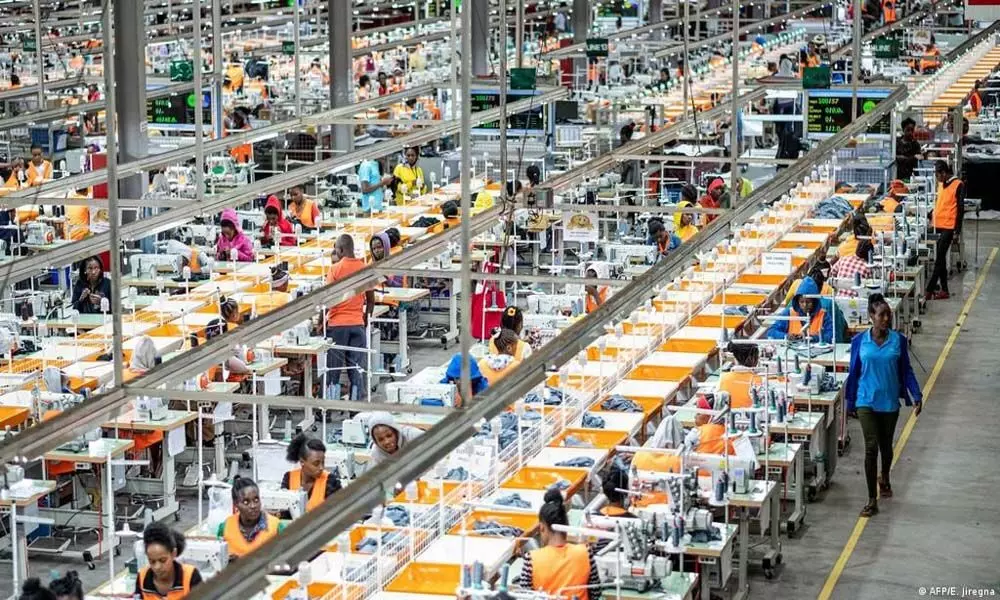FDI to Asia defies Covid-19, up 4% in 2020: UNCTAD
FDI in South Asia rose by 20% to $71 bn, driven mainly by a 27% rise in FDI in India to $64 bn. In India, robust investment in ICT and construction bolstered FDI inflows
image for illustrative purpose

Foreign direct investment (FDI) flows to developing countries in Asia increased by 4 per cent to $535 billion in 2020, reflecting resilience amid global FDI contraction, according to UNCTAD's World Investment Report 2021, published on 21 June.
The region, already the world's largest FDI recipient in 2019, received more than half of global FDI. Growth was driven by China, Hong Kong (China), India and the United Arab Emirates. Elsewhere in the region, FDI contracted. In economies where FDI is concentrated in tourism or manufacturing, contractions were particularly severe.
East Asia
Flows to East Asia rose by 21 per cent to $292 billion, inflated by the FDI recovery in Hong Kong (China), which surged by 62 per cent (to $119 billion), after a sharp fall of FDI in 2019 and due to corporate reconfigurations by multinational enterprises (MNEs) headquartered in the economy.
In China, FDI growth picked up pace in 2020 (growing by 6 per cent to $149 billion), reflecting the country's success in containing the pandemic and its rapid GDP growth recovery. The growth was driven by technology-related industries, e-commerce and research and development.
In the Republic of Korea, FDI declined by 4 per cent to $9 billion. Though the country was among the earliest to contain the Covid-19 outbreak and economic growth remained strong, a large drop in cross-border mergers and acquisitions (M&As) due to large divestments led to a decline in investment.
South-East Asia
South-East Asia, an engine of global FDI growth for the past decade, recorded a 25 per cent FDI contraction to $136 billion.
Singapore, Indonesia and Vietnam, the region's largest FDI recipients in that order, all recorded FDI declines. FDI to Singapore fell by 21 per cent to $91 billion, to Indonesia by 22 per cent to $19 billion, and to Vietnam by 2 per cent to $16 billion.
Lockdown measures, successive waves of Covid-19 infection, supply chain disruption, falling corporate earnings, economic uncertainties and delayed investment plans were key reasons for the contraction. In Thailand, FDI sank to -$6 billion, driven by the divestment of Tesco (United Kingdom) to a Thai investor group for $10 billion. In Malaysia, FDI fell by 55 per cent to $3 billion. FDI in Cambodia was flat at $3.6 billion thanks to inflows in finance. In Myanmar, FDI dropped 34 per cent to $1.8 billion.
South Asia
FDI in South Asia rose by 20 per cent to $71 billion, driven mainly by a 27 per cent rise in FDI in India to $64 billion. In India, robust investment in ICT and construction bolstered FDI inflows. Cross-border M&As surged 83 per cent to $27 billion, with major deals involving ICT, health, infrastructure and energy. FDI fell in other South Asian economies that rely on export-oriented garment manufacturing. Inflows in Bangladesh and Sri Lanka contracted by 11 per cent and 43 per cent respectively. In Pakistan, FDI was down by 6 per cent to $2.1 billion, cushioned by continued investments in power generation and telecommunication industries.
West Asia
FDI flows in West Asia increased by 9 per cent to $37 billion in 2020, driven by marked increase in M&As (60 per cent to $21 billion) in natural resource-related projects.
FDI in the United Arab Emirates rose by 11 per cent to $20 billion because of significant acquisitions in the energy sector. FDI in Saudi Arabia remained robust; inflows increased by 20 per cent to $5.5 billion, with investments concentrating in financial services, retail, e-commerce and ICT. FDI in Turkey decreased by 15 per cent to $7.9 billion. Investment picked up towards the end of the year ($2.3 billion in Q4), preventing a steeper decline.
Outflows
Outward FDI (OFDI) from Asia increased by 7 per cent to $389 billion – again, the only region recording expansion in outflows. This underscores the region's prominence as an important investor for the developing region. The growth was driven by strong investment from Hong Kong (China) and Thailand. China, the largest investor country in 2020, saw OFDI stabilizing at $133 billion. The country's tighter screening of OFDI, added to heightened scrutiny by the United States of investments originating from China, weighed on the country's OFDI since 2017. Continued expansion of Chinese MNEs and active M&A purchases abroad underpinned the stabilization in 2020.
Prospects
FDI prospects for the region are more favourable than the global outlook, with a projected growth of 5 per cent to 10 per cent, thanks to resilient intraregional value chains and strong economic growth prospects. Signs of trade and industrial production recovering in the second half of 2020 provide a strong foundation for FDI growth in 2021.
Manufacturing, an important FDI sector for the region, already showed signs of recovery in the second half of 2020. However, in smaller economies oriented towards services and labour-intensive industries, particularly hospitality, tourism and garments, FDI could decline further in 2021.


